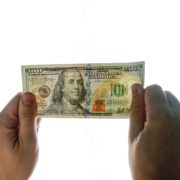Best. Day. Ever! – November 3rd
What is purple, a cape, and is all about making our world, and specifically our community, a better place? YOUR credit union and its employees!
Natco has partnered with Kasasa, Charlie Rocket, and other participating institutions to make Friday, November 3rd the BEST DAY EVER!
Our goal is to collectively achieve 100,000 RANDOM ACTS OF KINDNESS in a short amount of time.
You might spot Natco staff out in our local communities on Friday, November 3rd talking with people to share some ‘warm and fuzzies’ through hundreds of random acts of kindness.
We can’t wait to talk to people, hear their story, learn how a simple gesture brightens their day, take pictures with you, and see how people help us reach the collective goal by ‘paying it forward’ by sharing another act of kindness with someone else. Sharing that experience with us is key.
There are multiple ways to help our mission to bring the Best Day Ever to our community:
- Join our event and complete acts of kindness with us!
- Complete your own act(s) of kindness from wherever you choose – home, online, even during the bustle of your busy day. Kindness doesn’t need to take a lot of effort!
- Help us spread kindness by getting the word out! Raise awareness of our mission to promote positivity on Facebook.
- However you wish to participate, make sure you post it to Facebook using #NatcoCares and #KasasaLove and tagging @natcocreditunion and @askforkasasa. It will count toward the 100,000 acts of kindness goal across the nation.
- You can also email us details of your experience and photos to natco@natcocu.org. This will allow us to count your act of kindness toward the collective goal and share your experience and photos to our Facebook page.
To help us track the total nationwide acts of kindness, visit KasasaLove.com and click the button for each act of kindness you share with someone!





